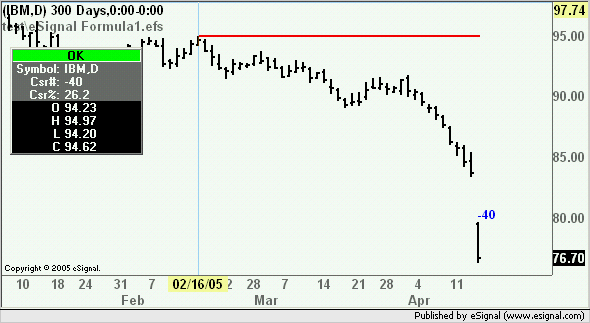The lowest() and highest() functions are nice editions to EFS2. However, it would be nice if there were complimentary functions where, instead of returning the highest or lowest number in a series, I could know the INDEX of the highest or lowest number.
For what I'm doing, I don't care what the actual high or low number is. I just want to initiate an action at the bar index where that event has occurred. Right now, it looks like I've got to do things the hard way: find the highest/lowest value in a range, and then start all over again in a loop to find out which bar index has tht value.
Steve
For what I'm doing, I don't care what the actual high or low number is. I just want to initiate an action at the bar index where that event has occurred. Right now, it looks like I've got to do things the hard way: find the highest/lowest value in a range, and then start all over again in a loop to find out which bar index has tht value.
Steve

Comment